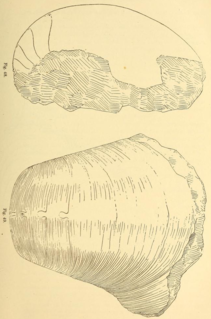 W
WThe Aipoceratidae are a small family of Carboniferous nautilids which have smooth shells and loosely coiled to faintly impressed whorls and in which the aperture may be modified at maturity. The Aipoceratidae include the Lower Carboniferous Aipoceras and Asymptoceras, and Librovitschiceras from the Upper Carboniferous. The Solenochilidae are closely related.
 W
WAlaskoceras is a genus of lower Ordovician coiled nautiloid cephalopods; the shell moderately expanded, ribbed, with a divergent living chamber; whorl section more broadly rounded ventrally than dorsally; siphuncle marginal at maturity, septal necks short, almost achoanitic; connecting rings thick, layered.
 W
WAsymptoceras is a genus of aipoceratids (Nautiloidea) similar to Aipoceras but tightly coiled and with only part of the body chamber divergent from the previous whorl. Shell evolute, expanding fairly rapidly; umbilicus open, perforate; whorl section ovoid to subquadrate.
 W
WCassinoceras is a genus of nautiloids belonging to the endocerid family Piloceratidae that comes from the late Early Ordovician of eastern North America and adjacent territories.
 W
WCenoceras is an extinct genus within the cephalopod mollusc family Nautilidae, which in turn makes up part of the superfamily Nautilaceae. This genus has been described by Hyatt in 1884. The type species is Cenoceras intermedium (Sowerby).
 W
WCooperoceras is a genus of Tainoceratid nautiloid cephalopod molluscs within the superfamily Tainocerataceae, characterized by and evolute shell with an open, perforate, umbilicus, sinuous ribs at maturity, and recurved hollow spines along the ventro-lateral shoulders. The flanks and venter are flattened, the flanks converge on the dorsum, the venter has a shallow median groove. The suture is with rounded ventral and lateral lobes. The siphuncle is small, tubular, and subcentral.
 W
WCymatoceras elegans is an extinct species of nautilitacean cephalopods in the family Cymatoceratidae. It is from the Cretaceous of Switzerland and the United Kingdom.
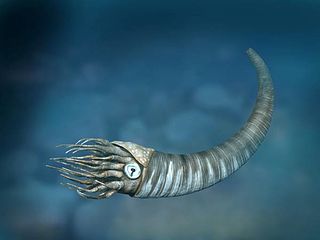 W
WCyrtoceras is an extinct genus of oncoceridan nautiloids that lived from the middle Ordovician to the middle Devonian, in Africa, Europe, North America and South America.
 W
WEstonioceras is an extinct genus of tarphyceridan nautiloids from the Ordovician of Europe.
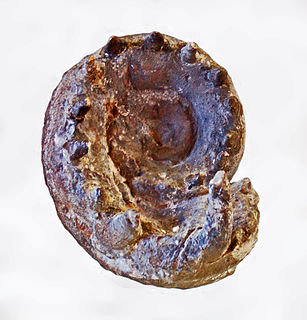 W
WHercoceras is a genus of trochoidally coiled nautiloid cephalopods placed in the nautilid family Rutoceratidae. These cephalopod lived i in the Eifelian age of the middle Devonian Period, which occurred 398-391 million years ago. Their shells have prominent lateral outgrowths in the form of spines and a high intraspecific variability.
 W
WLevisoceras is a genus of early Ordovician ellesmerocerid cephalopods.
 W
WLorieroceras lorieri is an extinct oncocerid nautilitoidean cephalopod belonging to the family Nothoceratidae. Fossils are found in Lower Devonian marine strata of France. Its shell is unusual among nautiloids in that it is a loosely coiled, turban-shaped helix that is sinistrally coiled.
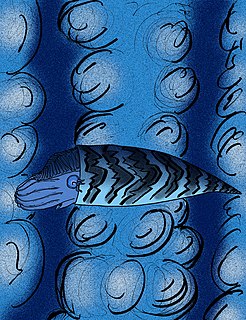 W
WNanno is an Endocerid, named by Clarke in 1894 for the apical end of an endocerid from the Trenton Limestone of New York state that has the basic description of the nanno type. It is possibly the senior synonym for Proterovaginoceras. As a valid genus, Nanno is included in the Endoceratidae but the nanno type apex may be found in other families.
 W
WNautilus cookanum is an extinct species of nautilus. It lived during the Eocene epoch. N. cookanum placed within the genus Nautilus, together with extant species based on their shared shell characters. Fossils of the species from the Late Eocene Hoko River Formation are noted as one of the two oldest occurrences for the genus.
 W
WParadakeoceras is a genus of early Ordovician cephalopods belonging to the nautiloid order Ellesmerocerida.
 W
WPlectronoceras is the earliest known shelled cephalopod, dating to the Late Cambrian. None of the fossils are complete, and none show the apex or aperture of the shell. Approximately half of its shell was filled with septa; 7 were recorded in a 2 centimetres (0.79 in) shell. Its shell contains transverse septa separated by about half a millimetre, with a siphuncle on its concave side. Its morphology matches closely to that hypothesised for the last common ancestor of all cephalopods.
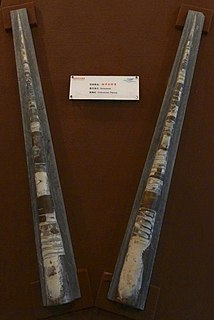 W
WSinoceras is an extinct genus of nautiloids from China included in the family Orthoceratidae that lived from the middle Ordovician until the Devonian. The type species, S. chinense, was originally described as "Orthoceras chinense," but then was promoted by Shimizu and Obata to its own genus, Sinoceras, in 1935.
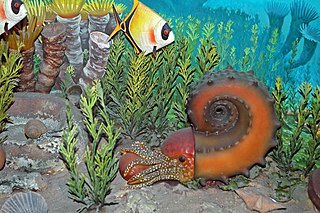 W
WTainoceras is an extinct coiled cephalopod that live during the later part of the Paleozoic and Triassic, that belongs to the nautiloid family Tainoceratidae.
 W
WTrochoceras is a genus of trochoidally coiled nautiloid cephalopods placed in the nautilid family Rutoceratidae that lived during the Middle and Late Devonian in what is now central Europe.